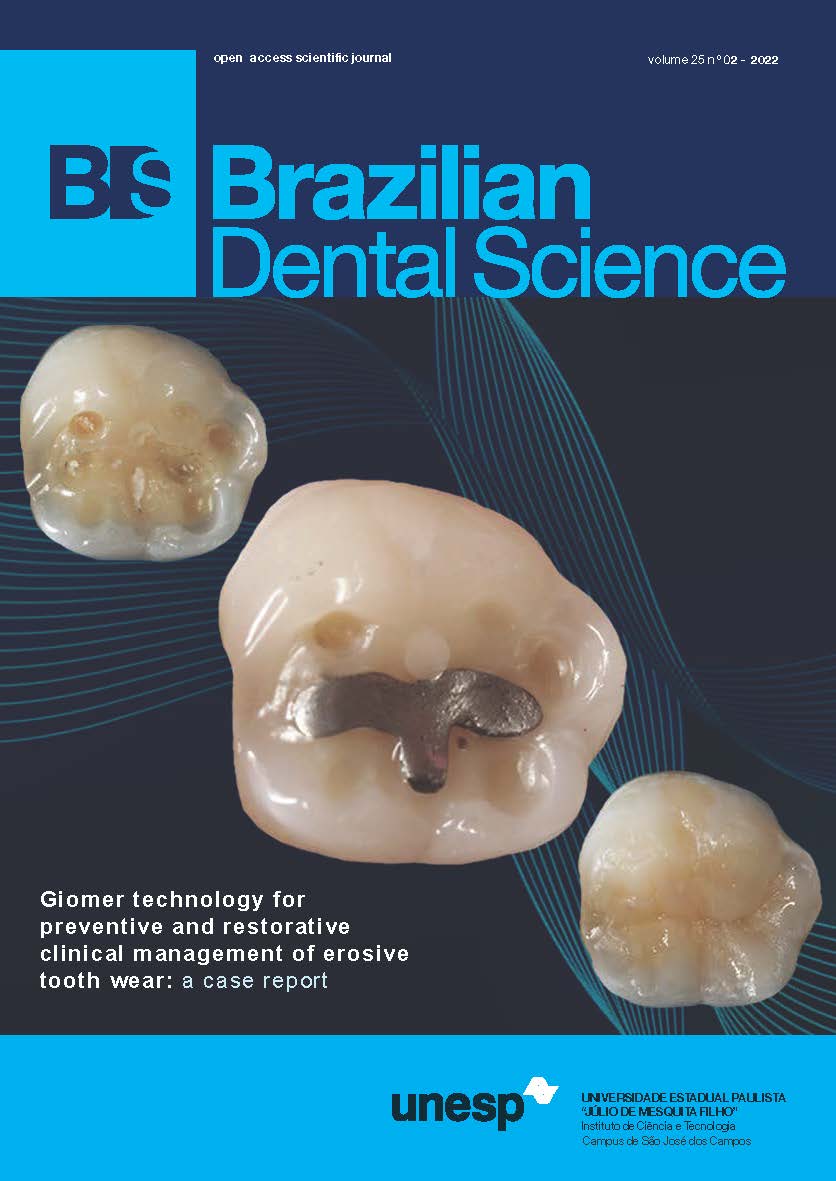Comparison of postoperative pain reduction using continuous rotation glide path system with other methods of glide path creation - a systematic review
DOI:
https://doi.org/10.4322/bds.2022.e2633Abstract
Objective: Various glide path preparation techniques have been introduced, providing easiness to the practitioners.
Recent literature has shown that glide path preparation influences the levels of postoperative pain occurrence
in individuals receiving endodontic therapy. This systematic review aims to compare the different glide path
preparation system in reduction of postoperative pain. Material and Methods: Electronic databases such as
PubMed, Scopus, Cochrane Library, LILACS, Google Scholar, and European PMC were searched for published
articles until July 2020. The studies included were randomized control trial (RCT) studies published during this
time frame with comparison of continuous glide path system with various other glide path systems in reducing
postoperative pain. The studies were reviewed using Preferred Reporting Items for Systematic reviews and Meta-Analyses (PRISMA) guidelines. The studies were reviewed independently by two reviewers who had assessed
the included studies, extracted data and the quality using the Cochrane risk of bias assessment tool. Results:
544 studies were received from the initial search, 11 articles were included in full text appraisal, 4 studies
were obtained for qualitative analysis. Mean VAS Scores showed an increased reduction of postoperative pain
in continuous glide path treated individuals (1.90-0.20) compared to reciprocating glide path (2.00-0.50) and
manual glide path (3.80-0.85). The consumptions of analgesics were seen to be as follows; Manual Glide Path
> Reciprocating Glide Path > Continuous Glide Path. Three out of four studies showed an overall “high” risk
of bias and another study showed an overall “unclear” bias. Conclusion: From the achieved results, continuous
glide path with 5.25% NaOCl irrigation has shown better reduction of postoperative pain compared to other
glide path systems. Individuals who had undergone manual glide path preparation showed higher incidence of
postoperative pain compared to other systems. The consumption of analgesics was seen to be higher in manual
glide path prepared individuals followed by reciprocating glide path and least being continuous glide path.
KEYWORDS
Analgesics; Endodontics; Pain; Root canal preparation; Sodium hypochlorite.
Downloads
Downloads
Published
How to Cite
Issue
Section
License
Brazilian Dental Science uses the Creative Commons (CC-BY 4.0) license, thus preserving the integrity of articles in an open access environment. The journal allows the author to retain publishing rights without restrictions.
=================




























